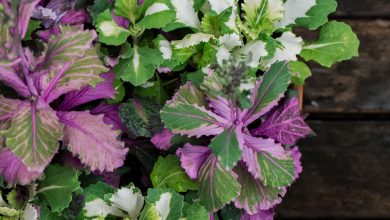Basil pests: leaves with black spots, worms, thrips …
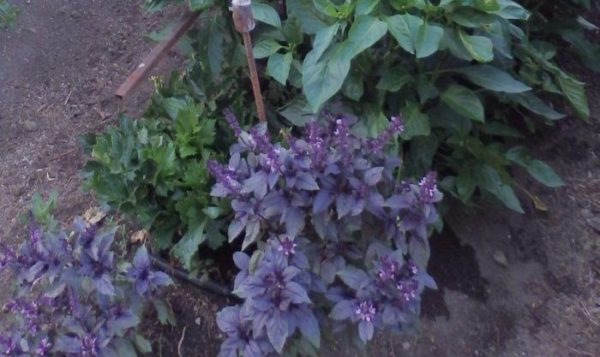
Today we will see some tricks on how to grow basil in the garden and in pots . Specifically, we will see some of the most common basil pests that can appear when growing this aromatic.

The basil leaves are delicious in salads and dressings are also used to make pesto sauce like. But in addition to its culinary uses, growing basil is interesting because this plant brings many benefits to the garden .
How to grow basil : sowing, watering and other care
Growing basil next to the vegetables in the garden can be very beneficial because its strong smell keeps pests away from the garden as harmful as mosquitoes or whiteflies .
Due to its important role in the organic garden, we already talked about this aromatic in other posts by Agrohuerto, and I showed you how I started growing basil in pots . You can see it in the post How to Sow Basil in pots , where you will find:
- Basil characteristics and requirements.
- Basil seedlings.
- Transplant and containers suitable for growing in pots.
- How to grow basil: watering and other care.
- Harvesting or harvesting basil.
- Conservation and uses.
Today we will focus, more than on general care, on the fight against pests and diseases of basil . Let’s see them!
Basil pests
Next we will see which are the basil pests that most often affect this plant and what are the necessary care for a sick basil plant to recover.
1. Star-shaped galleries and black dots on basil leaves: the miners
Leafminers are typical pests of basil. The larvae of the diptera or flies lay their eggs inside the leaves and, when they hatch, the larvae dedicate themselves to making tunnels and galleries, feeding on what they find in their path.
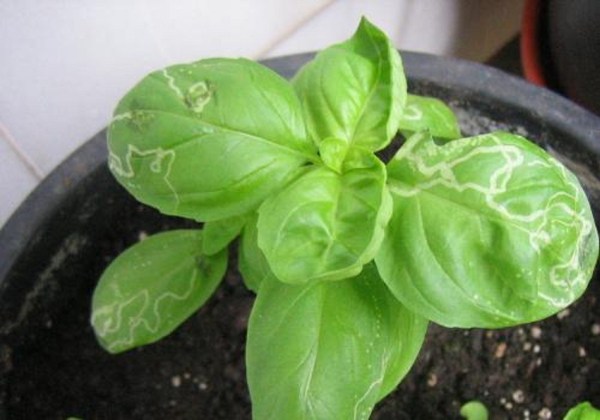
These galleries or tunnels in the basil leaves are a common problem, and the leafminer insects are usually to blame .
The best way to end a basil miner infestation is to eliminate it when it has not yet begun to cause much damage, that is, before the new bug hatches from the egg. The most important thing, therefore, will be to eliminate all the leaves that present these black spots with a star-shaped halo , and thus we will prevent the pest from spreading through the plant.
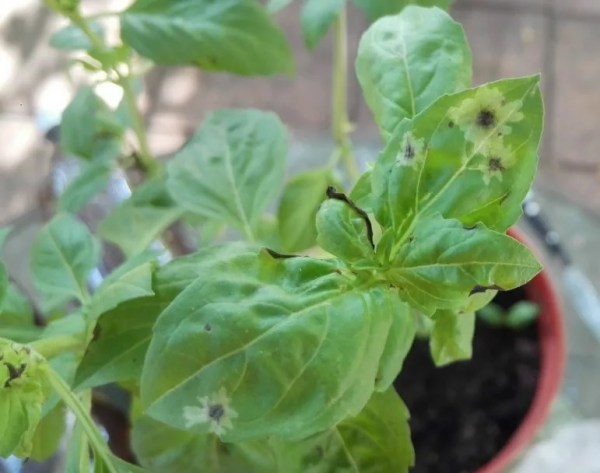
In addition, this pest can be treated with an ecological neem oil insecticide or with preparations containing the bacterium Bacillus Thuringiensis (which secretes toxins that kill the pest). More information about leafminers in the post about the liriomyza fly
2. Aphids, one of the pests of basil
Aphids can be many colors, but they are fairly easy to recognize by their oval shape and distinctive little legs. It is also one of the most common pests in garden and garden plants …
Unfortunately, the strong smell of basil is often not enough to intimidate aphids, especially if the pest is already well established on other nearby plants …
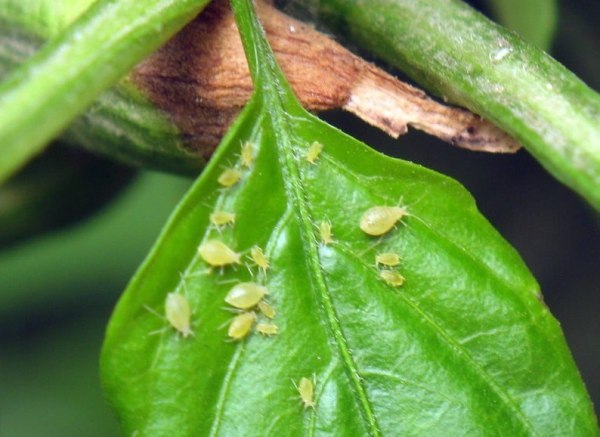
If you see these green and oval bugs on basil plants, try to kill them as soon as possible because they are insects that reproduce very, very quickly . Look how some bean plants from the HuertAula Cantarranas community garden that we visited were planted in just a few days .
Aphids bite the leaves to absorb and feed on plant sap. At the points of the bites, yellow or brown spots appear that cause the leaves to curl and dry , the deformation of the shoots … In addition, aphids can cause other problems: by sucking the sap they can transmit plant viruses, and the honeydew they secrete attracts other pests such as ants and can cause the «bold» fungus to appear .
How to control the basil aphid?
In the entry » Aphids, how can we control them « we leave you the characteristics of this pest, how to recognize it and some ecological techniques to kill aphids.
In the category of «Pests and diseases» you can also find several posts about ecological remedies or natural insecticides that can be made at home to fight against aphids and other basil pests .
3. Thrips on the leaves
Thrips are very small, dark bugs that move fast . They are tiny and elongated, and they hide mainly on the underside of the leaves, in the folds, in the buds and in the flowers. They damage the leaves leaving stains that are like a film between silver and transparent (what they have not eaten from the leaf …) that later dries.
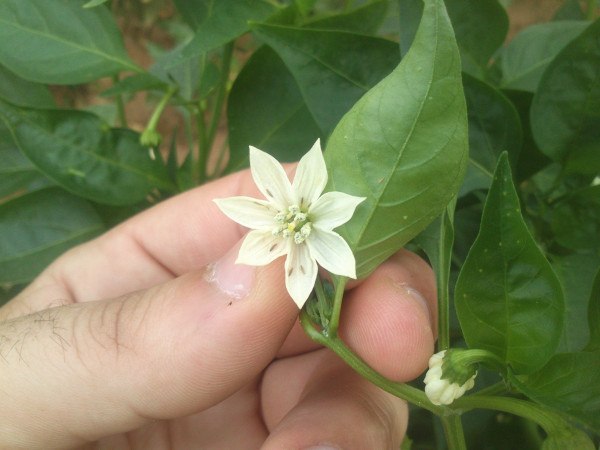
They are located on the flowers, on the underside of the leaves and on the fruits and scratch or scratch, with their small mouthparts, the plant surface causing some silver or translucent spots that later become necrotic, turning dark until dry.
Treatment against thrips
One of the best methods to prevent thrips is to have a sprinkler or micro-sprinkler irrigation, since thrips do not like falling water and will not stay near plants that have this type of irrigation.
In the post that Sandra wrote, Bugs in the flowers: flower thrips, you have more details about this pest and how to prevent and eliminate thrips in basil or other plants in the garden.
4. Holes in basil leaves: snails and slugs
They are a relatively easy pest to eliminate because they are very easy to recognize and find both the damage they cause (large rounded holes, especially in vegetables and leafy aromatic plants, such as basil or lettuce) and the individuals themselves that are causing the disease. problem, they are usually quite large.
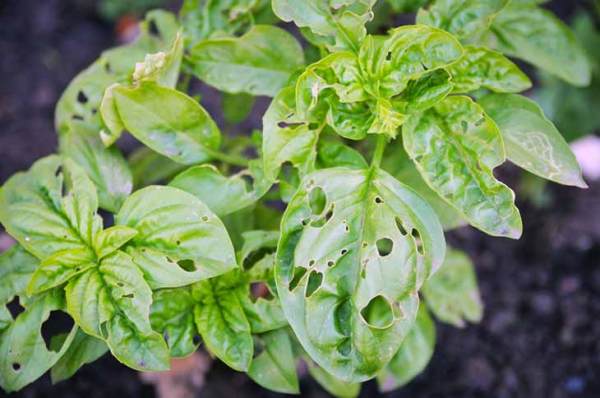
Their slow movement makes capturing them manually or with traps quite easy. I leave you a post with tips on how to eliminate a plague of snails or slugs .
In addition to these insects, there are other pests that can attack this aromatic, such as beetles , green worms or leafhoppers (leafhoppers) . Also fungi basil or leaves with dry edges by sunburn are common problems discussed in another post.
If you have photos of basil pests or have experience fighting against any of these insects that we have seen in today’s post, do not hesitate to tell us in the comment thread below.


![Photo of Arid Climate: [Characteristics, Flora, Fauna and Adaptability]](https://www.complete-gardening.com/wp-content/uploads/2022/08/arid-climate-characteristics-flora-fauna-and-adaptability.gif)
